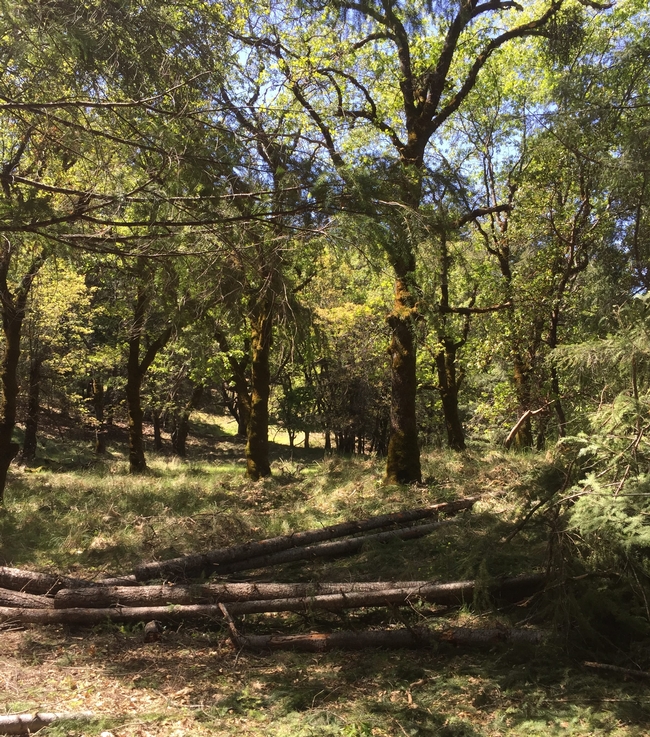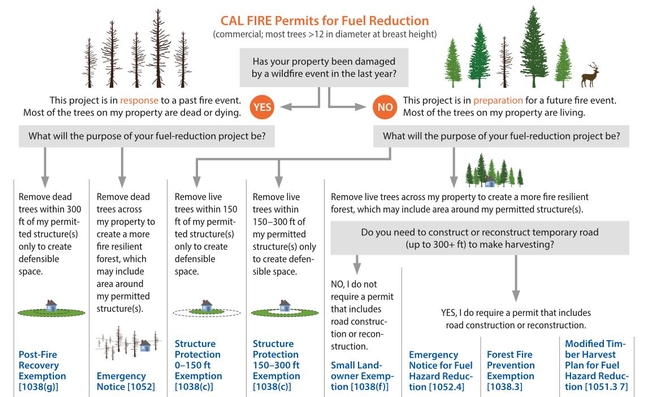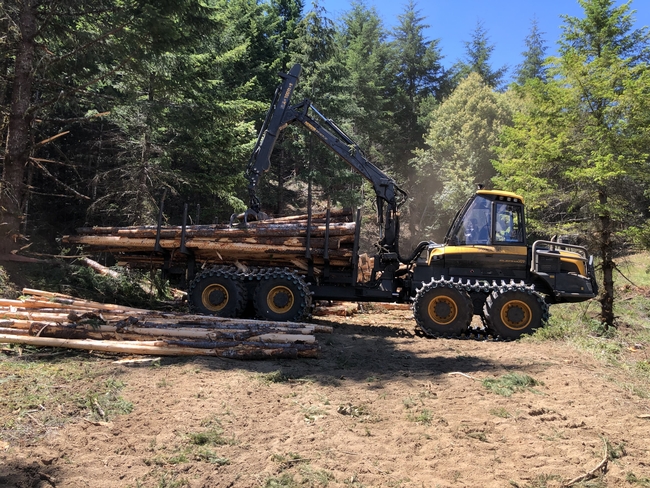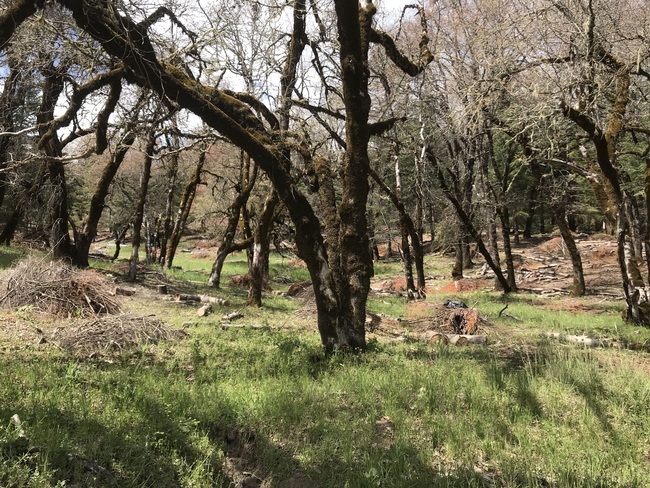Posts Tagged: guide
Free wildfire publication simplifies understanding fuel-reduction permits on private land
UCCE forest advisor helps landowners, community groups determine best project options
As Californians prepare for another year of drought and an anticipated intense fire season, landowners and organizations across California have been working to reduce forest fuels – flammable woody material – that can endanger their properties and communities.
For many of them, however, their urgent efforts hit a sizable speed bump: a massive rulebook that describes, amid a thicket of other information, the permits required before people can treat or remove fuels – as well as a litany of attached requirements, restrictions and stipulations.
“The California Forest Practice Rules are 410 pages, in font size 6,” said Yana Valachovic, UC Cooperative Extension forest advisor for Humboldt and Del Norte counties and registered professional forester. “Trying to figure out what permit vehicles make sense in the rulebook is not easy even for the experienced professional forester.”
To assist private landowners and community groups in deciphering the rules and determining their most cost-effective options, Valachovic took the lead in writing a new guide, “Planning and Permitting Forest Fuel-Reduction Projects on Private Lands in California,” available as a free resource in the UC Agriculture and Natural Resources catalog.
“We tried to create a system where all the permits are laid out side-by-side, and put in a decision tree framework to help make it easier,” said Valachovic, highlighting the publication's tables that break down the project goals and parameters a permit applicant should think about when weighing their choices.
Considerations include whether the project is pre- or post-wildfire, the location and dimensions of trees targeted for removal, the conditions of the site before and after the project, potential time limits, commercial options, and, crucially, budget constraints – given that the permitting process could comprise up to one-third of total project costs.
A primer for planning and preparation
Chris Curtis, the unit forester for CAL FIRE's Humboldt-Del Norte Unit, said that he and his colleagues are grateful for this new tool and plan to use it as an “over the counter” handout for community members. He added that the charts summarizing timber-harvesting regulations and possible funding sources are especially helpful.
“These give a landowner a starting place to sort through the many commercial timber harvesting documents and fuel-modification project funding source options available,” Curtis said. “A landowner is self-guided to a few options that will seem most appropriate, and this will facilitate a resource professional to assist that person in selecting the most appropriate permitting.”
The publication helps prepare the landowner or community entity (such as Resource Conservation Districts, Fire Safe Councils or other concerned groups) for the types of questions that might come up in preliminary planning conversations with a registered professional forester or RPF.
Just as a homeowner would talk with a contractor before tackling a construction project, landowners and community groups must consult with an RPF, Valachovic said. RPFs have the specialized knowledge of forest practice rules and regulations related to water, air quality and endangered species protections, and the license to file the permitting documents.
“That's what I do in my job: Landowners come to me and we start talking about goals and objectives,” she said. “We start thinking about potential timelines – which goals are short-term, which are long-term – and how we can put an operational plan together to help those landowners achieve their goals.”
Long-term projects, short-term actions
Among the many practical tips outlined in this guide, Valachovic emphasized one in particular: for landowners dipping their toes into fuel reduction for the first time, keep the project “simple and realistic.”
In the short-term, however, Valachovic stressed that the extremely dry conditions across the state make it imperative for Californians to harden their homes, manage the fuels (i.e., landscape plants, stored wood, tall grass, etc.) immediately adjacent to their homes, and devise and review family emergency plans; see UC ANR's Wildfire Preparation page for detailed information and resources.
“There are a lot of immediate actions that people can be doing this year to help mitigate their wildfire risks and prepare for the unexpected,” she said.
In addition to Valachovic, co-authors of “Planning and Permitting Forest Fuel-Reduction Projects on Private Lands in California” are Jared Gerstein of BBW Associates and Brita Goldstein, UCCE staff research associate in Humboldt and Del Norte counties; both are registered professional foresters.
Take a Bug Break--and Bring Along This Book
Don't take a coffee break. Take a bug break. Step into your garden, walk over to a community park, or hike in the wilderness and see what's out...
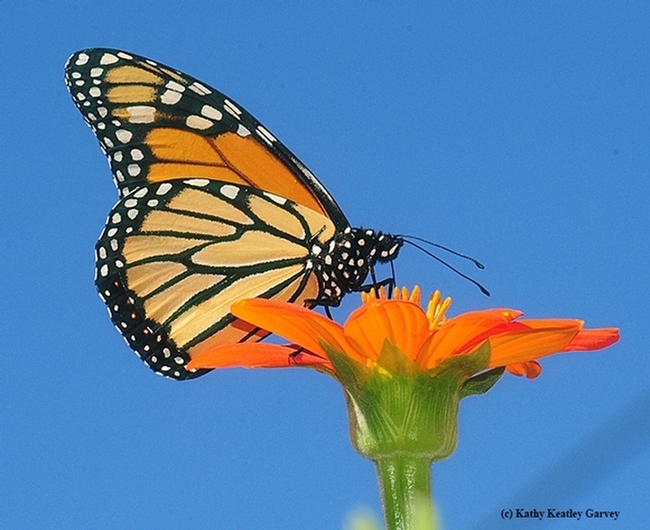
A monarch butterfly, Danaus plexippus, nectaring on a Mexican sunflower, Tithonia rotundifola. (Photo by Kathy Keatley Garvey)
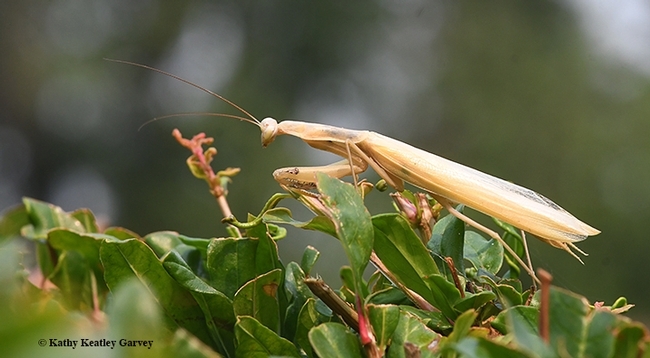
A praying mantis, Mantis religiosa, looking for prey. (Photo by Kathy Keatley Garvey)
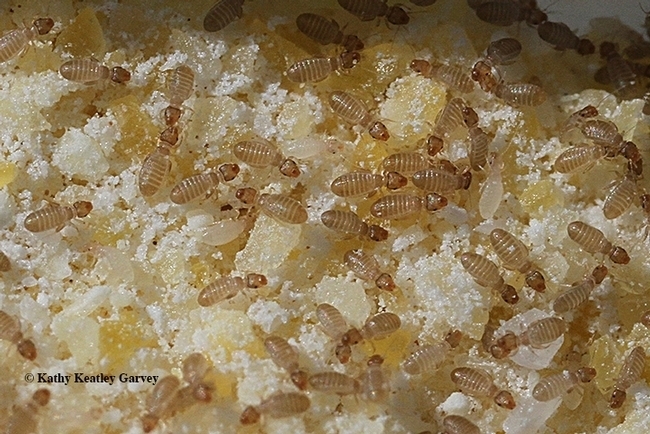
Booklice, Liposcelis bostrychophila, are nearly microscopic (about a millimeter long). You may find them in your cornmeal. (Photo by Kathy Keatley Garvey)
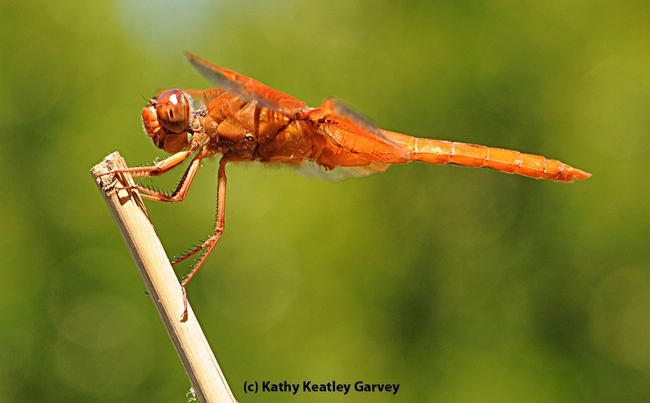
A flameskimmer dragonfly, Libellula saturata, perches on a stake. (Photo by Kathy Keatley Garvey)
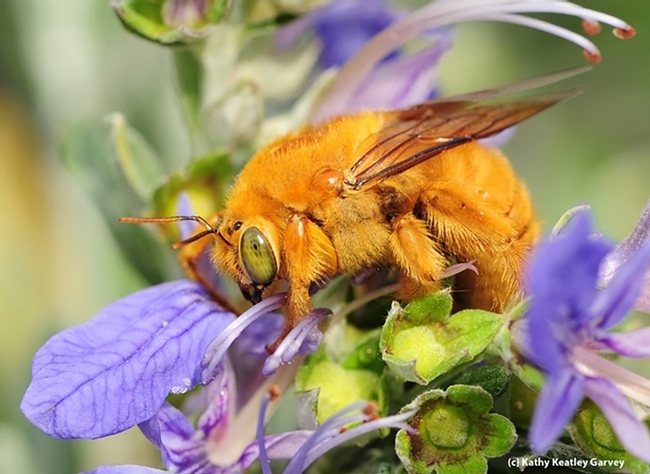
This is the male Valley carpenter bee, Xylocopa sonorina (formerly known as Xylocopa varipuncta). (Photo by Kathy Keatley Garvey)
The Fluttering of Butterflies and Why This 4-H Project Is Important
Bet you've never seen a butterfly like this! The colorful butterfly seemed to flutter from a blanket that Solano County 4-H'er Erica Lull was sewing...

This butterfly-themed blanket is the work of Erica Lull for the "Cuddle Me Close" 4-H community service project. (Photo by Kathy Keatley Garvey)
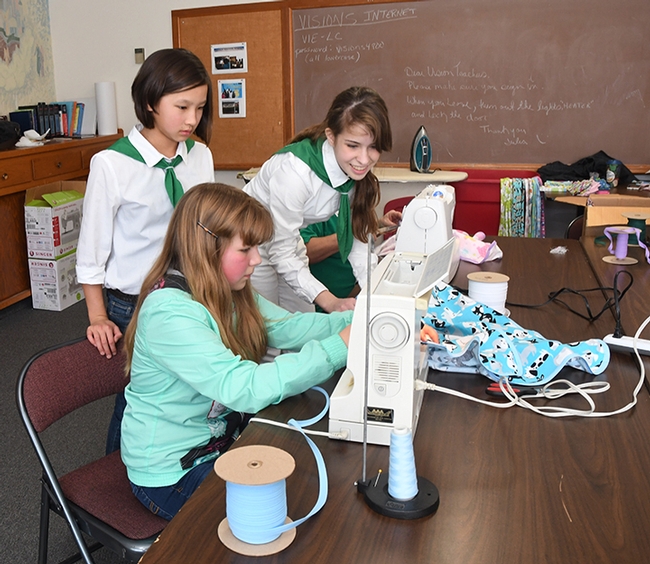
Junior 4-H leader Erica Lull (right, in the back) of the "Cuddle Me Close" project oversees the work of Suisun Valley 4-H Club member Clairese Wright (seated) while Kate Frenkel, also of Suisun Valley 4-H, watches.
All the Way from Down Under
One of the most prominent and distant--as in far away--visitors to the Häagen-Dazs Honey Bee Haven, the half-acre bee friendly garden...

This photo of a bee foraging on a zinnia, taken in the Haagen-Dazs Honey Bee Haven, graces the front and back covers of "Bee Friendly: A Planting Guide for European Honeybees and Australia Native Pollinators." (Photo by Kathy Keatley Garvey)
Don't Be Bugged by Bugs
I’ve never been a fan of bugs, but once I learned more about them during my Master Gardening program, I’ve become somewhat obsessed. Not an obsession like, now I love them, but an obsession in that I am much more aware of them in my every day surroundings, and usually do my best to figure what kind each one is that I run across. Here are a couple examples of this new “obsession”:
Out for a lovely walk in the Benicia Recreation area with my fiancé and our puppy, I glanced down and saw a bug, so I immediately squatted down to inspect further. Sure enough, it was the very same bug that was on our final exam … a ground beetle! My puppy wanted to inspect further, but I hurried her away saying “that’s a ‘good bug’, so you have to leave it be!”
At work, there was a very odd and quite honestly very creepy-looking bug crawling across my floor right towards me, but instead of stamping on it like I would have been previously inclined, I flipped a clear container over it and a slide a piece of paper under it. I then brought it to a table for further inspection. Turns out, this one was a House Centipede (Scutigera coleoptrata), deemed a “good bug”, so I took my homemade trap outside and shook that creepy guy far away from my office door.
It helps to have at least one of a few great resources accessible as often as possible: a Mac’s Field Guide-- a nicely laminated card of Good/Bad Garden Bugs; the book: Pests of Landscape Trees and Shrubs and Integrated Pest Management Guide; or the IPM website, Pests in Gardens and Landscapes: http://www.ipm.ucdavis.edu/PMG/menu.invertebrate.html
Of course, everyone knows ladybugs (or “lady beetles” to be more accurate), and without knowing much about them, I think most of us assume they can be categorized as a “good bug”. But here are the specifics about lady beetles and why they are “good”: They are predaceous on aphids and occasionally other soft-bodied Homopterans, used for aphid control in roses and can be important in every crop with aphid pests.
And how about rolly pollies? Ever since most of us were kids, these cute little fellas were most likely deemed as “good bugs” just because they were fun! But here is a little-known fact about them: They are actually called pillbugs and are not insects at all, but soil-dwelling crustaceans in the Isopod order, more closely related to crayfish than to insects. They feed primarily on decaying plant material and are very important in the process of decomposing organic matter in the garden. So yes indeed, they are absolutely “good bugs”.
My point in all this that even if you’re not a fan of bugs, that’s no reason to kill them if you run across them, especially if you are out and about on their turf. Still, if they cross your doorstep and are on your turf, I encourage you to think twice before you squish them -- if they can be easily identified as a “good bug”, then why not capture them and put them back out on their turf? After all, they can do good things for you out in your yard and garden – cheap labor! J
I wish you all Happy Bug-watching!

Ground Beetle (photos by JoEllen Myslik)
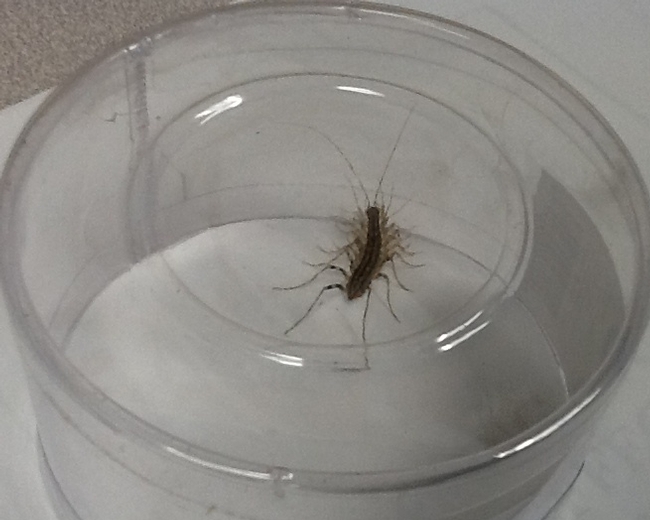
House Centipede

Macs Field Guide and captured flying insect.


